
by gcadmin on Sunday, June 3rd, 2018 No Comments
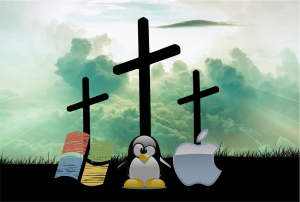 Surprisingly comparing Microsoft Windows, Apple Macintosh OS and Linux is a little like comparing the Catholicism, Orthodox Christians and Protestants (and related religions).
Surprisingly comparing Microsoft Windows, Apple Macintosh OS and Linux is a little like comparing the Catholicism, Orthodox Christians and Protestants (and related religions).
Sounds a little crazy doesn’t it?
If you keep reading you may learn more about your religion, or someone else’s religion – which I think would be a good thing. Perhaps by the end of this article, you will be able to name your ‘spirit’ religious operating system (like a spirit animal.).
Bear with me and read on.
Now I always knew that the Catholic faith was based the belief of Jesus Christ and his teachings. Jesus Christ was a human that taught peace, love and forgiveness – and died on the cross to save humanity. I had a vague understanding of several other religions were also based on Jesus Christ and in general the followers of any religion based on Jesus were referred to as Christians. (Or more precisely, the term Christian was used as a derogatory term by the outsiders, like Romans, to label ‘those crazy people that believe in Jesus Christ, and his one God and resurrection.’)
So Catholic’s are Christian
but what are the differences between these other Christian religions?
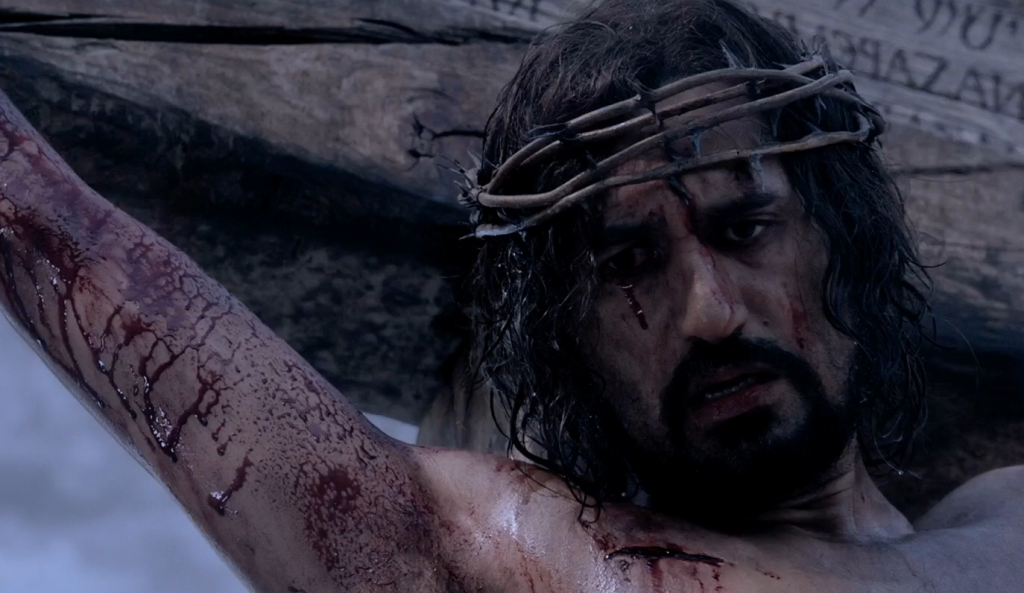
I’ve been learning from people that have joined the Catholic Church (from Protestants, to Atheists, and even other religions). I’ve read, watched or listened to them. Reflecting and researching the points and ideas they raised.
For example, a wonderful young lady Lizzie Reezay – and through her mostly fun, sometimes deep and always worthwhile videos, I learned much about the Church I belong to. Seeing the Catholicism through Lizzie’s eyes provided a fresh and fascinating view. It has been an enlightening journey the last few weeks as I delved deeper into the origins of the early Christian Church and its history resulting in the landscape we see today.
During my crash course through videos, books and material by Lizzie, Stephen K Ray, Nabeel Qureshi, Andrew Clavan etc I can outline some of the key disagreements where the core Catholic beliefs or Dogma clash or differ with some of the other religions or branches of the Christian “tree”.
Now, I am absolutely not a theologian or religious expert by any measure. I am a Catholic by birth and in the last few years have renewed my practice. Take what I write here as my high level, and limited, understanding at the time of writing. If am am incorrect or miss a nuance, let me know.
Authority – Who’s the boss?
I heard this term used “Sola scriptura”. As a Catholic I had no idea what it meant and had to look it up and research. In simple terms, it is a corner stone of many Protestant churches – If it’s not written in the bible (ie in scripture) it doesn’t count. The literal meaning is teaching and believing from material found only in the bible scripture.
This implicitly excludes traditions and the authority of the Catholic Church structure and ultimately the authority of the Pope.
There are several key components here to consider.
How was the Bible written?
Consider when and how the bible was written. The earliest Gospel appears to have been written around 50AD to 70AD. Many others were written over the following 300 hundred years – and the first canon version of the bible was around 400AD.
Four centuries is a long time – In the USA, 4 centuries ago the pilgrims were arriving on the Mayflower. The Spanish discovered the Philippines just 5 centuries ago. The Dutch discovered Australia just 4 Centuries ago but it was only 2 centuries ago that the British started to colonized it.
If the only guide is the bible, then what were Christians following for the first 300 or 400 years? Clearly it was impossible for Jesus to say “follow the scripture only” and be referring to anything but the Old Testament. The answer for Catholics, of course, is that the Christians followed the oral teachings of Jesus (and traditions) from apostles, and those appointed by the apostles, and what was in effect the “living” Church.
Who had a Bible and could they even read?
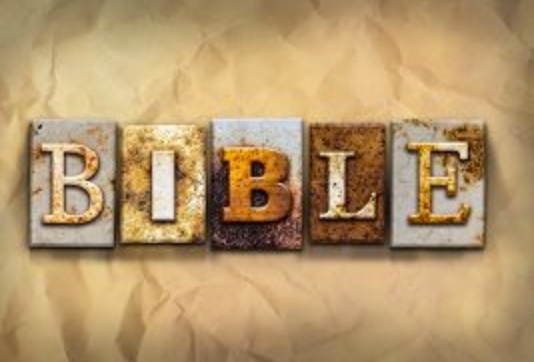 At the time, books were very rare and expensive. Pages were made from papyrus, cheap but not long lasting, or expensive leather skins. Books were created by having a scribe manually copy the entire book. The bible in its first form when completed around 400AD would take a scribe around 3 years to complete. Each copy took one scribe THREE years to create. The cost of the bible was therefore enormous – In effect, you were paying for expensive pages of leather plus the salary of a scribe for the 3 years. This meant early bibles were rare. Churches would typically have a single copy. This allowed the priests and followers to read the bible, even if they didn’t own one. Given the value of the bible it sometimes was chained to stop theft. At today’s equivalent each copy of the bible was worth over $100,000. No wonder it was guarded and chained.
At the time, books were very rare and expensive. Pages were made from papyrus, cheap but not long lasting, or expensive leather skins. Books were created by having a scribe manually copy the entire book. The bible in its first form when completed around 400AD would take a scribe around 3 years to complete. Each copy took one scribe THREE years to create. The cost of the bible was therefore enormous – In effect, you were paying for expensive pages of leather plus the salary of a scribe for the 3 years. This meant early bibles were rare. Churches would typically have a single copy. This allowed the priests and followers to read the bible, even if they didn’t own one. Given the value of the bible it sometimes was chained to stop theft. At today’s equivalent each copy of the bible was worth over $100,000. No wonder it was guarded and chained.
A second issue is that around the time of Jesus, literacy was very low. Figures of literacy are estimated from 1% to 5%. This means the majority of people, even if they had access to the bible could not read it. This explains why much of the Church was taught by spoken words and tradition. It also explains much of the religious imagery in the Churches – The paintings, statues and stained-glass windows told key parts, like the passion of Christ, visually.
How and when did Jesus create the Church?
Jesus created the Church, the office of ‘second-in-command-to-Jesus’ and then appointed Peter to this office. This is written in the written bible – just not in one place. Take Mathew 16:18-19
“Peter: you are a rock, and on this rock foundation I will build my church and not even death will ever be able to overcome it. I will give you the keys of the Kingdom of heaven; what you prohibit on earth will be prohibited in heaven, and what you permit on earth will be permitted in heaven.”
What does he mean? keys to heaven? Actually, not the symbolic keys to heaven as many tend to interpret it. At the time keys to a city were real – The gates were locked at night by heavy doors. The keys were physically large and literally worn over the shoulder due to the size. A king would have had a royal steward, a second-in-command that would open the gate of the city, kingdom, palace and royal treasury at the start of each day.
Further, take Isaiah 22:22:
“I will place on his shoulder the key to the house of David; what he opens no one can shut, and what he shuts no one can open.”
Taken together, the meaning is clearer. Jesus was the King and his steward and second-in-command was, by Jesus word, Peter.
Also, in Jewish culture, a royal monarchical tradition, the Queen of a kingdom was not the wife of the king, but the mother of the King. Jesus was the lord and king, Mary – mother of Jesus – was the Queen and the steward with the key to the kingdom of Jesus was Peter.
In Greek, the bible actually says Jesus gives the key – singular (Not giving a set of keys to everybody). He is giving them to Peter only – Peter is thus is in control of the dominion of the church of Jesus. More precisely, Peter is in control of this office and since this office in the Church of Jesus is to last until the end of time, the role of key holder, ‘head’ of the Church must be passed on to the next holder of the office. Just like in the Jewish monarchy, the office of the ‘key’ holder, would be passed on by succession to another trusted person.
The phrase “Prohibit on earth/Prohibit in heaven” – is saying on earth Peter will be responsible for defining rules/guide lines of the Church. Peter would determine who may enter heaven via the teaching and rules he defined in the Church. Clearly not just rules for Peters life time – since ‘not even death’ will overcome it means the Church will carry on.
In Mathew, the story occurs in “Caesarea Philippi”. Why “Caesarea Philippi”?
There is a pagan temple here near a very large rock. It is about a 3 day walk from Galilee.
Jesus had a plan for Peter from very early on. In John 1:42
“Then he took Simon to Jesus. Jesus looked at him and said, ‘Your name is Simon son of John, but you will be called Cephas.’”
This means rock. In Aramaic, “Kefa” means rock and the original writing by Mathew was in Aramaic. Jesus was saying “You will be Kefa – the rock”.
The Catholic understanding is that Jesus had created the office of the head of the church – the rock – and Peter was the first holder of that office – the Papal office.
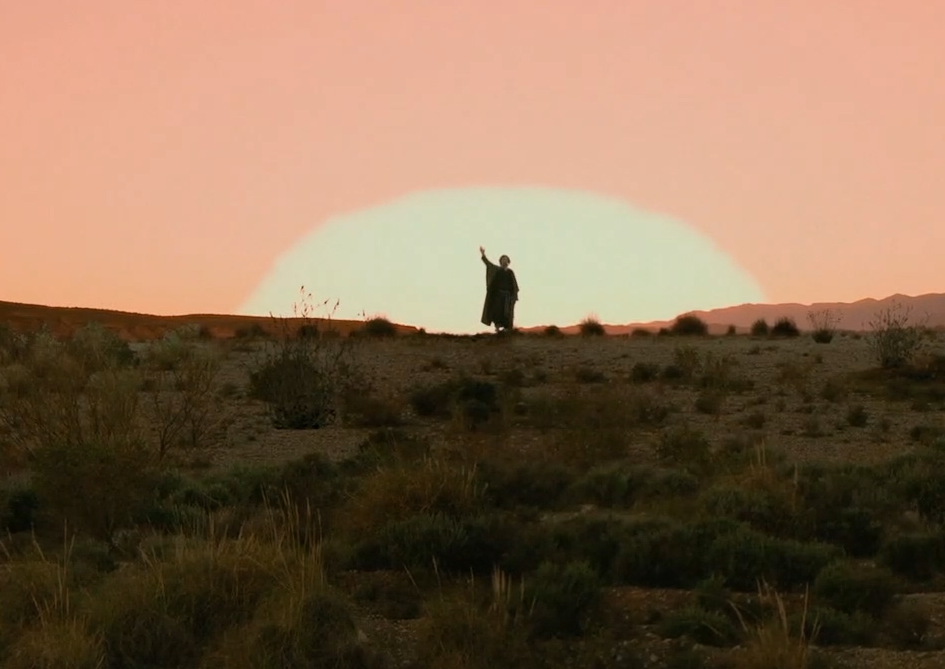
Succession, Judgement, Papal Infallibility & the Chair
The Catholic doctrine includes the belief of “Papal Infallibility”. There are many that struggle with this belief. How can a human person be “infallible”?
Consider Exodus 18:20-21 “You should teach them God’s commands and explain to them how they should live and what they should do. But in addition, you should choose some capable men and appoint them as leaders of the people: leaders of thousands, hundreds, fifties, and tens. They must be God-fearing men who can be trusted and who cannot be bribed.”
Also consider Mathew 23:2 “The scribes and Pharisees sit in Moses’ seat. 3 So practice and observe everything they tell you. But do not do what they do, for they do not practice what they preach.…”
This tradition of the Chair goes back 3500 years to the time of Moses. Moses, and subsequent descendants would sit in a Chair and listen, judge and teach God’s commandments. The Catholic doctrine built on this tradition – replacing Moses with Jesus’ steward Peter. What was the Chair of Moses is now the Chair of Peter. The ‘Chair of Peter’ was used for 150 years before the bible was assembled (circa 250AD) – so this tradition was in place before the bible was even completed.
The Catholic belief is that the Pope is not perfect. In fact, he goes to confession. God uses fallible ‘simple’ men. God inspired ‘simple’ men like Mathew, Mark, Luke and John to write scripture. God used Peter and the succession of Popes in the same way. The fact that human Popes are by definition fallible is entirely consistent, all the way back to Peter. In fact we know clearly Peter was fallible, and with the help of Jesus he became, at times, infallible.
Read Mathew 14:31
‘Immediately Jesus reached out His hand and took hold of Peter. “You of little faith,” He said, “why did you doubt?” ‘
Jesus walked with Peter over the water back to the boat – Peter was able to walk on the water because he was helped by Jesus with perfect faith and infallibility. Similarly, the Pope is not infallible – but by the grace of Jesus and God, the Pope becomes Infallible.
To date, the Papal Office has existed for 2000 years – the longest existing continual institution/office in the world. Catholics thus have trust that the teachings of Jesus and his Church have been handed down the unbroken 2000-year chain of Apostles, Peter and the the subsequent Popes.
Mary – Worship?
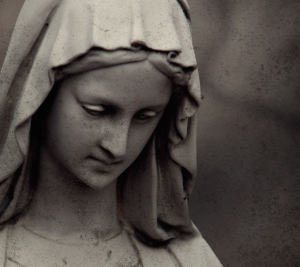 Non-Catholic Christians believe that worshiping Mary is a sin. Reading the commandment against worshiping false idols and Gods as applying in this context.
Non-Catholic Christians believe that worshiping Mary is a sin. Reading the commandment against worshiping false idols and Gods as applying in this context.
They believe that the Catholics are worshiping Mary as false idol – not the true God.
The most common Marian prayer ‘Hail Mary’, is espoused as a clear example of this worship. The first line of the prayer is
“Hail Mary, full of grace. The lord is with thee.”
In reading, Luke 1:28
‘The angel appeared to her and said, “Greetings, you who are highly favored! The Lord is with you.”’,
you can see the Hail Mary is literally a summary of the greeting in the Bible.
The “you who are highly favored” is a translation of the word close to grace. The original Greek is “chaire kecharitomene”. The angel is saying “Hello, you who are filled completely, perfectly, enduringly endowed with grace”. (Read here or here for more).
From kecharitomene.com
“No other human being in ALL of Scripture is described this way. In fact, Jesus is the ONLY human who is spoken of more highly.”
The words from the bible show Mary is highly considered, second only to Jesus. The Marian prayer are words that are saying “Hello” and asking Mary to pray on our behalf. The Catholic belief is that prayers to Mary are not worship as a God, but as reverence to her as the Queen of heaven and Mother of the Lord God.
The Catholic Church is the very earliest, indeed the first of the Christian religions. The doctrine and teachings and authority flowed directly from Jesus, to Peter and the apostles, and to the bishops and Popes of today. The New Testament was not around until the 4th Century and the bible was expensive and rare – taking 3 years wages in costs and a similar amount of time to copy by hand. Until the 15th Century with the invention of the printing press, the bible was firmly out of the hands of the majority.
Around the 10th century, the Christian Orthodox offshoot was effectively a frozen version of the Church at that
time. The Orthodox belief was that the existing teachings were sufficient and resisted further attempts to refine or change the doctrine. In effect the Orthodox Church was putting a pause on any further input from the Pope and the Catholic Church.
Around the 15th Century, the “protesters” that wanted some different interpretations formed their own ‘protestant’ religion – like Martin Luther. A core belief in this group was to remove the central authority of the Pope and traditions and replace it with an approach of interpreting directly from only the bible. With the invention of the printing press, bible printing was more affordable. The “protestors” printed many many of their own slightly modified bible and circulated it to seed the reformation.
The reformation in fact started further fracturing the Christians into other branches. Since there was no central authority to rule on a consistent teaching or interpretation, new groups would break off with their own new approach.
Thus summarised, the Roman Catholic Church can be viewed as the main trunk of the Christian Church, and the second largest group is the divergent branch of protestants.
I will use current common modern operating systems as parallels and to help compare and contrast.
Here is my analogy – my conjecture.
Steve Jobs and Bill Gates were like Jesus Christ.
They founded organisations with core beliefs and then passed on those beliefs.
They, respectively, produced a ‘Church of Windows’ and ‘Church of Apple’.
Steve and Bill had a vision, they outlined the idea and got those ideas translated by programmers into operating systems.
The vision and ideas from Bill and Steve were handed down by word of mouth and tradition initially. Bill and Steve would have talked to the programming team, tell them what to aim for, encourage promising moves towards their vision, discourage or abandon moves away from their vision.
As the ‘Churches’ grew, these traditions became documented – the Style guides and standards proliferated.
At all times there was a clear authority of what was in and out. What was in-scope, and what was left out altogether, or left until later. These requirements and plans were handed down to other people directly. At no time could any single programmer or user in Microsoft or Apple decide to change the ‘core code’.
Only the approved code, traceable in ancestral to the original code every makes it to the core. In some ways, the commonality is the proprietary nature of Microsoft and Apple define it.
Linus Torvald started Linux (and based on the much earlier standard slightly proprietary Unix). Unlike Unix where parts and certain flavours were proprietary, Linus made Linux open source. Linus saw what there was in Windows, Apple and Unix, and decided to create his own version based on Unix.
In this way, Linus is a little like Martin Luther and the protestant approach.
Linux has been quite successful, however there are dozens of variations – called ‘Distributions’. While the ‘kernel’ pretty much comes from a core which Linus still influences closely, the many distributions package many other commands and tools into the kit are independent from Linus. This means a computer desktop running Ubuntu looks and feels totally different to one running Red Hat, for example. Any individual or organisation is free to take and build on what is already there. Linus has no direct influence on these developments.
In Linux, the source code is the ‘Bible’. The people can copy/change and make a new distro. Linus cannot and does not stop or control these. The followers of the new distro are not even aware of how much is the same or different. Further, Linus really only produced the more inner part of a functional Linux desktop – the kernel. The design of the Linux desk top – what we would call the user experience – was done by disparate groups. On a Linux machine you had many options.
With Bill and Steve, they had the vision which produced the source code they (as in Microsoft and Apple controlled). Importantly their ongoing vision and authority meant the vision was consistent and complete. Bill and Steve’s vision included what you the end user would see in the desk top operating system.
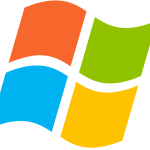 In the beginning of Christianity there was Jesus who as a human died a terrible death in unbearable pain on a cross. In his 3 years of teaching and travel, he appointed 12 apostles to carry on his teachings and Church. There was no bible at this time – no bible to speak of until some 400 years later. This church was carried by spoken teachings by people appointed and taught by the apostles and Peter as the head. The teachings and appointments of this church, founded in 32AD, has carried on for almost 2000 years and is the Catholic Church today. For all this time there has been an appointed head of the Church – the key holder of this office that is called the Pope. I think the operating system spirit for the Catholic church could arguably be Microsoft Windows or Apple MacOS. I would lean towards Microsoft Windows just a little bit.
In the beginning of Christianity there was Jesus who as a human died a terrible death in unbearable pain on a cross. In his 3 years of teaching and travel, he appointed 12 apostles to carry on his teachings and Church. There was no bible at this time – no bible to speak of until some 400 years later. This church was carried by spoken teachings by people appointed and taught by the apostles and Peter as the head. The teachings and appointments of this church, founded in 32AD, has carried on for almost 2000 years and is the Catholic Church today. For all this time there has been an appointed head of the Church – the key holder of this office that is called the Pope. I think the operating system spirit for the Catholic church could arguably be Microsoft Windows or Apple MacOS. I would lean towards Microsoft Windows just a little bit.
![]() The first apostolic writings were from around 50-70AD, and the first agreed bible was from around 400AD. Around 1054AD then the Christian Orthodox church split from the Catholic church. I think the operating system spirit for the Orthodox Church is closer to Apple MacOS. It shares much with the Catholic church, but the Orthodox artwork and iconography are beautiful. This Church has changed very little for a long time – and appears more conservative/cautions – so more like Apple – cautious changes, but stunningly beautiful.
The first apostolic writings were from around 50-70AD, and the first agreed bible was from around 400AD. Around 1054AD then the Christian Orthodox church split from the Catholic church. I think the operating system spirit for the Orthodox Church is closer to Apple MacOS. It shares much with the Catholic church, but the Orthodox artwork and iconography are beautiful. This Church has changed very little for a long time – and appears more conservative/cautions – so more like Apple – cautious changes, but stunningly beautiful.
 Around 1500AD, Martin Luther drove the ‘reformation’ – A reformation attempt of the Catholic doctrine. This was the branching off of the Protestants (and other subsequent branches) from the Catholic church. While retaining much in common with Catholicism such as Jesus Christ, the Eucharist and belief in the Bible, there were some fundamental differences. Most significant was no formal head of this new church (and indeed many subsequent churches) and believing in only teaching on what was directly in the bible.
Around 1500AD, Martin Luther drove the ‘reformation’ – A reformation attempt of the Catholic doctrine. This was the branching off of the Protestants (and other subsequent branches) from the Catholic church. While retaining much in common with Catholicism such as Jesus Christ, the Eucharist and belief in the Bible, there were some fundamental differences. Most significant was no formal head of this new church (and indeed many subsequent churches) and believing in only teaching on what was directly in the bible.
Oral teachings and traditions from both early Christian times and Jewish heritage are disregarded. I think the operating system spirit for Protestants and related Churches is Linux. There are many distribution and flavors to choose from. The operating system is solid – much of what is called the ‘cloud’ in the internet is built on Linux. Like Linux, anybody can create a new variant church loosely based on their own interpretation of the bible and Christian conventions.
One important point I would like to add though – the Christian Churches started 2,000 year ago. However, all the Christian religions rely on the foundations established in the Jewish religion and beliefs starting around 3,500 years ago. The Christian Old Testament is shared with Judaism. Rather than an operating system spirit, I think of Judaism as the mainframe computing spirit – Mainframes are the foundation for virtually every computing device today.
So which Operating System Spirit are you?
Lizzie Reezray – Catholic Convert / ex Protestant
@lizziereezay
Stef Nicholas – Catholic Convert / ex Atheist
@StefMNicholas
Nabeel Qureshi – Christian Convert
@NAQureshi
Steve Ray lecture. – Christian Convert / ex Baptist
Andrew Klavan – – Christian Convert / ex Atheist & ex Jew
@andrewklavan
Jesus Died for Us – What it a systems test?
Posted in Bible, Computer Technical, Philosophy, Religion.